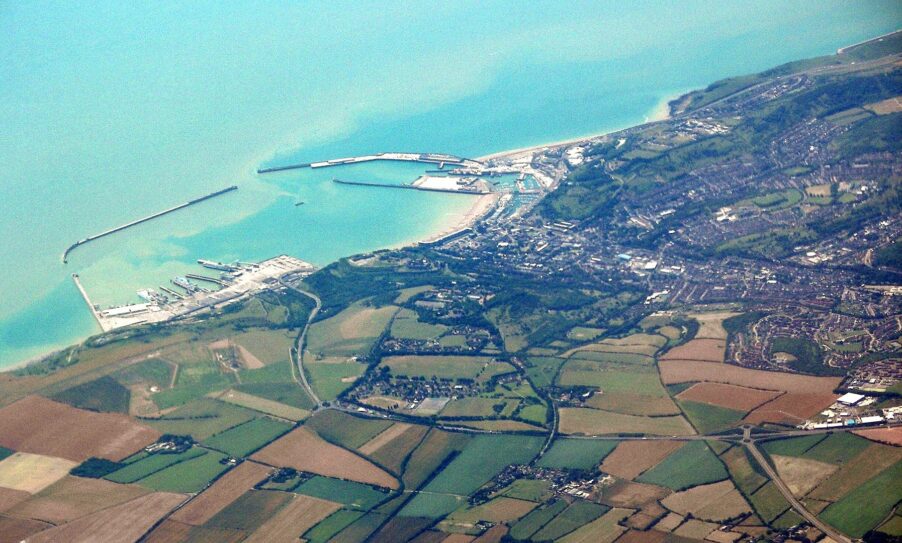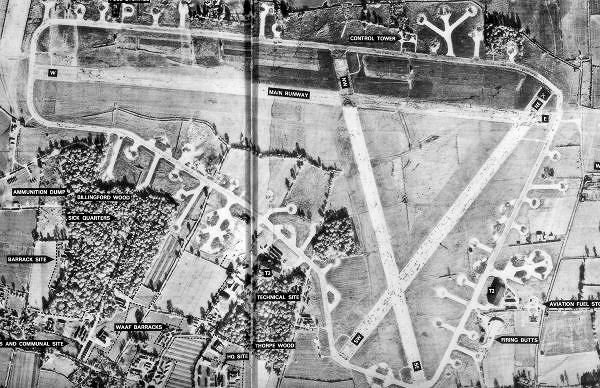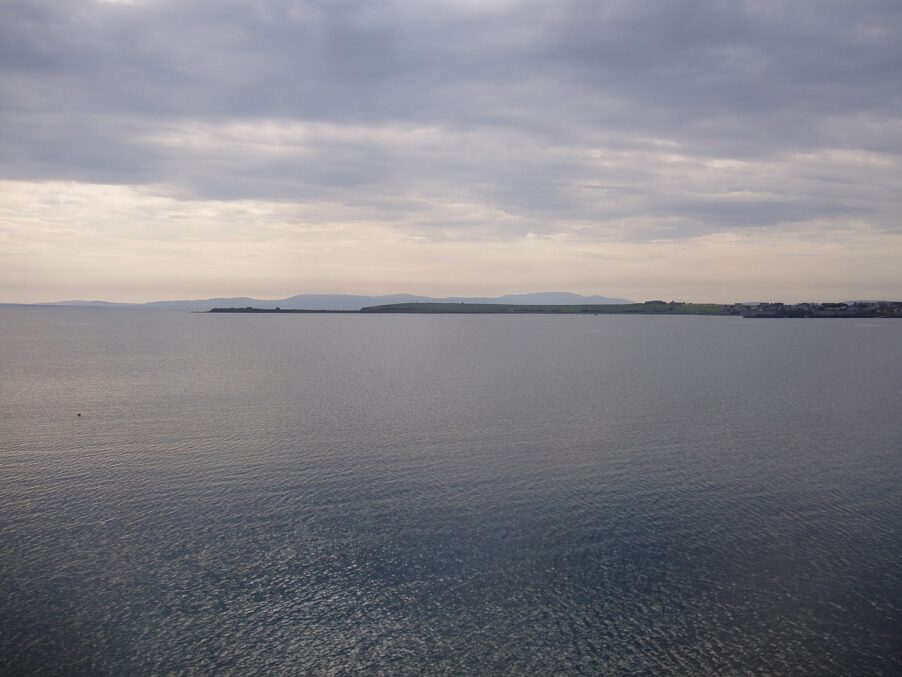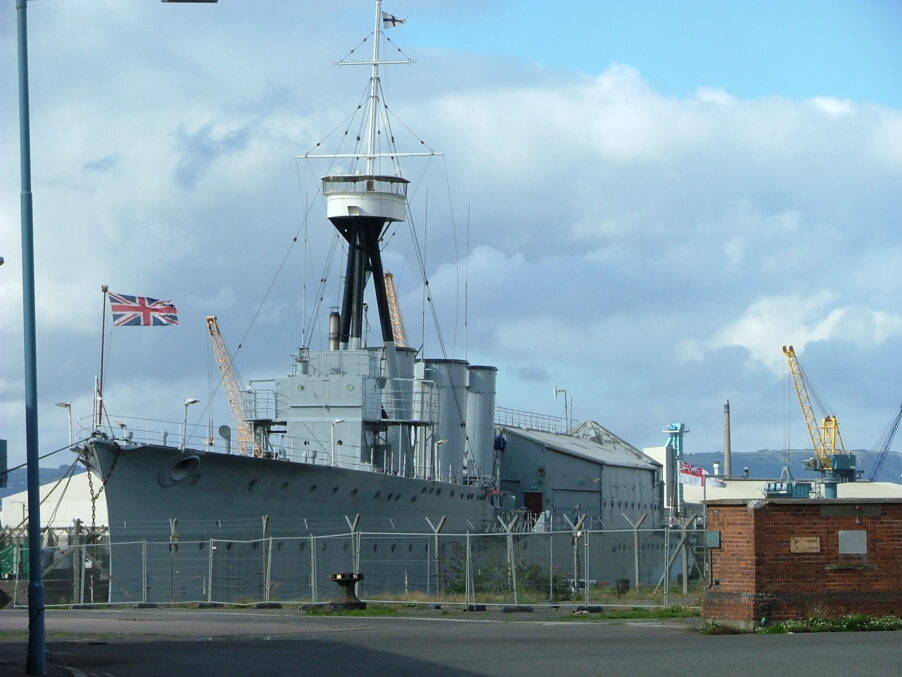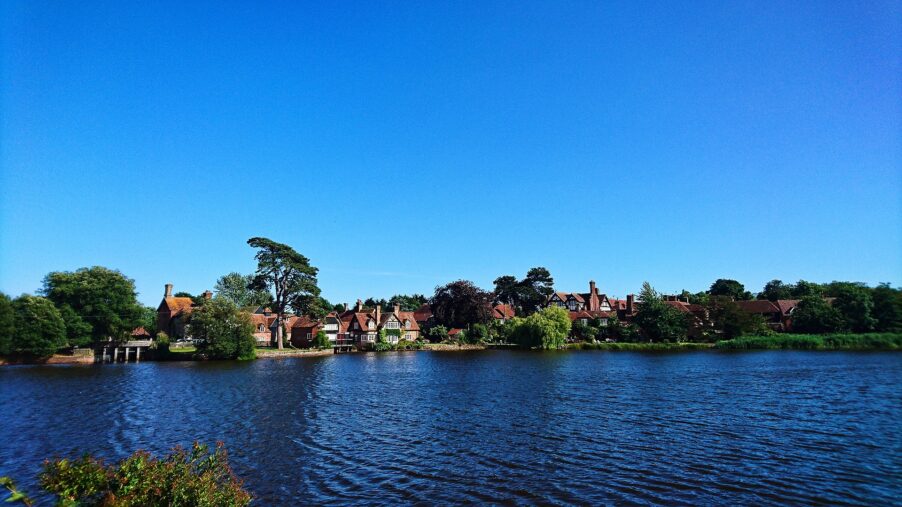Bunkers, airfields, and radar stations from World War II serve as living witnesses to a not-so-distant past, preserving the memory of the tragedies and heroism of a bygone era. Scattered across the UK—from the tranquil plains of Wales to windswept Scotland, from the steep cliffs of Dover to the rolling green hills of Northern Ireland—they remind us of a past that continues to live on in stone and iron.
Echoes of War: British WWII Sites
Dover Bunkers
The White Cliffs of Dover, one of the most iconic natural landmarks in the UK, are not only majestic in their beauty but also conceal numerous underground structures. During World War II, the complex bunkers of Dover played a critical role in defending the southern coast against potential invasion by Nazi Germany. Originally constructed in the 18th century, the tunnel system was significantly expanded in the 1940s to include operations centres, hospitals, ammunition depots, and living quarters for soldiers. The underground fortifications provided concealment and safety for military operations.
Today, parts of the bunkers are open to visitors, offering a unique opportunity to experience the atmosphere of the time and learn about the history of this strategic site.
Secret Airfields of East Anglia
During the war, East Anglia became a hub for military airfields. Hidden amidst forests, these bases served as launching points for strategic bombing missions. Many of these sites are now abandoned, overgrown with grass and shrubs, retaining only traces of runways and crumbling hangars.
One of the most famous sites was RAF Thorpe Abbotts in Norfolk, home to the U.S. Army Air Forces’ 100th Bomb Group, known as the “Bloody Hundredth.” They carried out missions targeting German infrastructure across France, Germany, Poland, the Netherlands, Norway, and Ukraine. Once outfitted with state-of-the-art technology, the airfield now hosts a museum that preserves the memory of the airmen and staff who served there.
RAF Neatishead Radar Station
Norfolk, known for its plains and wetlands, was also home to one of Britain’s most critical radar stations, RAF Neatishead. This site played a key role in early warning systems, tracking German aircraft and ensuring timely responses to air raids. Operating under the motto “We watch the skies,” the station was equipped with cutting-edge radar technology. Operators worked around the clock to monitor every signal.
Today, the site has been transformed into a museum where visitors can view vintage equipment and learn about the technologies of the past, offering a glimpse into the challenges and stakes of the era.
Scapa Flow Naval Base in Scotland
While most key wartime installations were in southern Britain, Scotland also played a vital role. Scapa Flow, located in the Orkney Islands, was crucial during World War II. This natural harbour served as the Royal Navy’s main base, protecting Britain’s northern borders. Its isolated location and vast waters made it ideal for docking and repairing warships, as well as organising anti-submarine defences.
To guard against German U-boat attacks, the harbour entrances were blocked with deliberately sunk ships. The rusting remains of these vessels are still visible in the waters, serving as a haunting reminder of the fierce naval battles of the time.
Welsh Bunkers
Nestled among the mountain passes and valleys of Wales are bunkers that served to protect against air and sea attacks. Particularly notable is a bunker in Pembrokeshire, which housed radar observation systems during the war. Its strategic location enabled monitoring of maritime routes that enemy fleets might have used.
Many of these shelters are now abandoned, though one was recently found to contain a stash of smuggled tobacco and vapes—modern-day smugglers continuing the “traditions” of the past.
Mysteries of Belfast Port
Belfast, the industrial heart of Northern Ireland, also played a critical role in Britain’s wartime efforts. The Belfast port, known for its shipyards and shipbuilding (including the famous Titanic), was repeatedly targeted by German air raids. To protect workers and residents, numerous bomb shelters were constructed throughout the city, including large underground bunkers near the port. These structures were reinforced with concrete and equipped with ventilation systems, water supplies, and food storage for prolonged stays.
Cornwall’s Hidden Bunker
Known today for its picturesque coastline and ideal diving conditions, Cornwall also harbours traces of its wartime past. A bunker in Portreath, built to defend against German submarines, served as a command center and equipment depot. Its underground corridors housed officer quarters, weapons storage, and communication hubs for coordinating naval operations.
Though partially in ruins today, remnants of the site continue to tell the story of the war on Britain’s southern shores.
Beaulieu Base in Hampshire
Hidden within the New Forest in Hampshire lies Beaulieu, a secret base where agents of Britain’s Special Operations Executive (SOE) were trained. These agents were deployed to occupied Europe for espionage missions. In the secluded forest, they learned skills such as radio communication, explosives handling, and guerrilla warfare. The base remains shrouded in legends about covert operations and unique training methods.
Preserving History
World War II sites are not just ruins; they are silent witnesses to an era when a nation’s survival depended on the courage, ingenuity, and determination of its people. These bunkers, shelters, and airfields hold stories of ordinary individuals who found themselves in extraordinary circumstances, reminding us of the cost paid for the peace we often take for granted.


